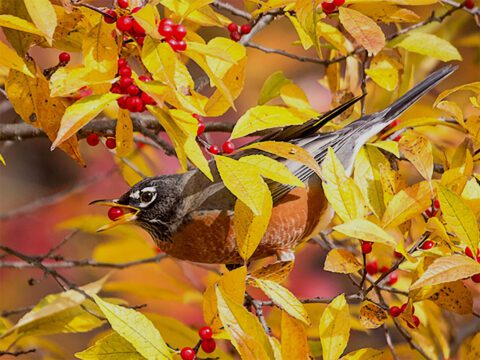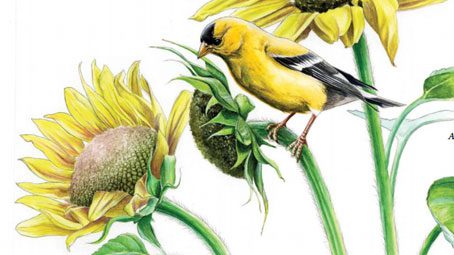Landscaping for Birds: 7 Important Plant Groups
April 20, 2015
To provide habitat—including both shelter and food throughout the year—for as many kinds of birds as possible, try to include plants from these 7 important groups:
Related Stories
- Conifers: Evergreens such as pines, spruces, firs, arbor vitae, and junipers provide excellent shelter, nest sites, and food. For example, some northern finches specialize on extracting seeds from conifer cones, and some hummingbirds take insects and sap from the tips of conifer branches when they first return in spring.
- Wild grasses and forbs: Untrimmed wild grasses (as opposed to closely cropped lawn grass) as well as “weeds” provide cover for ground-nesting birds. Their seeds provide abundant food for many birds.
- Nectar producers: Flowers, especially those with tubular red corollas, attract hummingbirds and orioles. Insects attracted to these plants also serve as food for many birds.
- Summer fruits: Cherry, chokecherry, native honeysuckle, raspberry, serviceberry, blackberry, blueberry, native mulberry, and elderberry provide food for many birds during the breeding season.
- Autumn fruits: Dogwoods, mountain ash, buffalo-berries, and other fall-bearing fruit and berry plants provide food for migratory birds, both to build up fat reserves before migration and to sustain them along their journey. Non-migratory birds also fatten up on these so they can enter the winter season in good physical condition.
- Winter fruits: Plants that hold onto their fruits long after they ripen in the fall provide a winter food source for winter residents and early-returning migrants. Robins, waxwings, Pine Grosbeaks, and mockingbirds are among the birds drawn to fruit trees in winter. Crabapple, snowberry, native bittersweet, sumacs, viburnums, American highbush cranberry, eastern wahoo, Virginia creeper, and winterberry (holly) are all valuable for these birds.
- Nuts and acorns: Oaks, hickories, buckeyes, chestnuts, butternuts, walnuts, beeches, and hazels provide food for titmice, jays, turkeys, some woodpeckers, and other “mast-eaters.” Insects drawn to their spring flowers provide food for spring-migrating birds. These trees also provide nesting habitat for many species.
Read more: Here are detailed descriptions of some specific highly recommended plants and trees, including information about the kinds of birds they attract.
All About Birds
is a free resource
Available for everyone,
funded by donors like you
American Kestrel by Blair Dudeck / Macaulay Library



